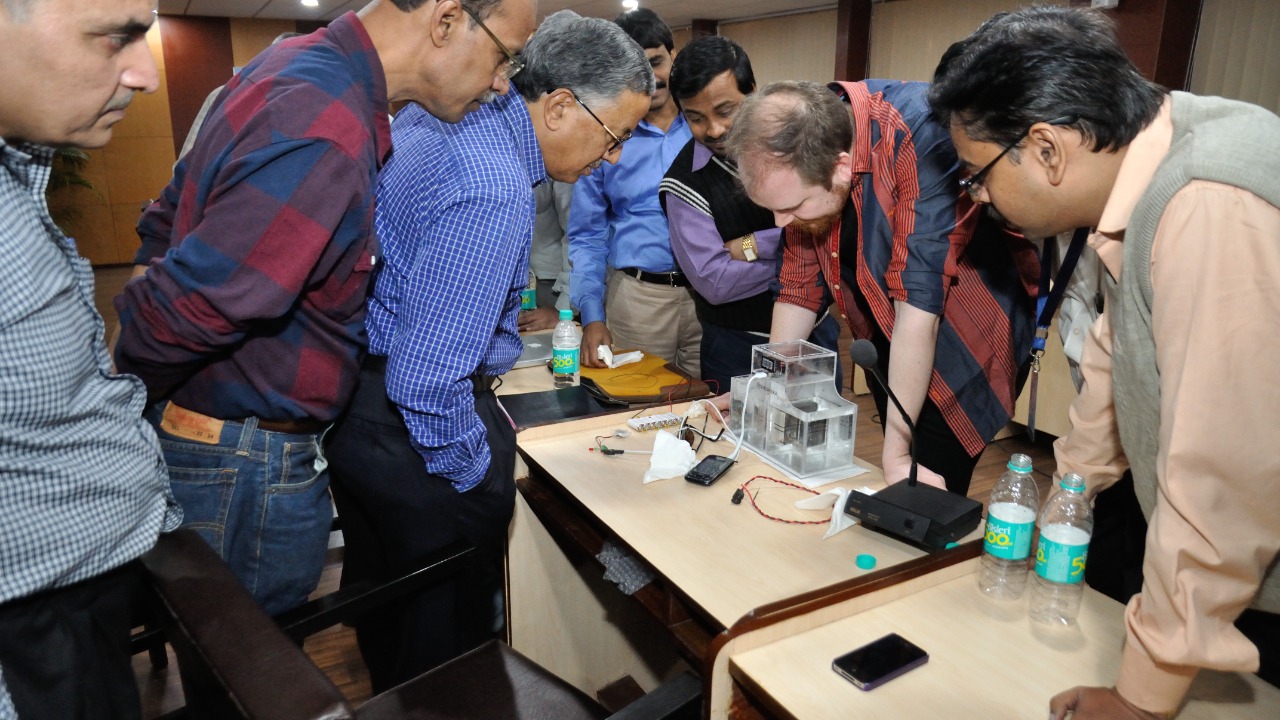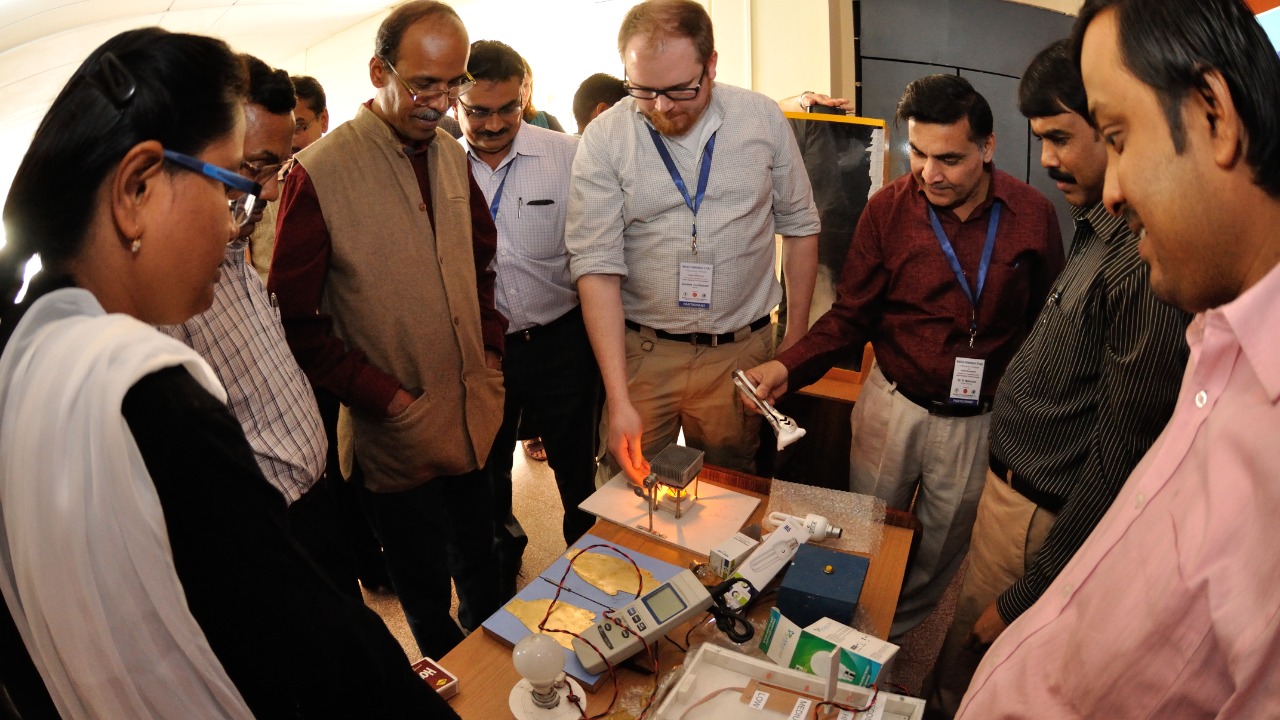
In a landmark achievement, researchers have successfully observed the 174-year-old Thomson effect in a real-world experiment, marking a significant advancement in the field of physics. This experiment confirms the existence of the transverse Thomson effect, a phenomenon first proposed by physicist William Thomson in the 19th century, and opens new pathways for future scientific exploration and technological innovation.
The History of the Thomson Effect

William Thomson’s Original Theory
William Thomson, later known as Lord Kelvin, was a pioneering physicist in the 19th century whose work laid the groundwork for many thermodynamic concepts. The Thomson effect, named after him, describes the heating or cooling of a conductor when it is subjected to an electric current and a temperature gradient. Thomson’s contributions to thermoelectricity were monumental, as he introduced new ways of understanding how energy is converted and transferred, a fundamental aspect of modern physics.
Thomson’s fascination with thermodynamics and electromagnetism was evident in his numerous contributions, including the formulation of the absolute temperature scale, now known as the Kelvin scale. His insights into energy transfer and conversion processes have been instrumental in advancing both theoretical and applied physics.
The Long Road to Experimental Proof
For over a century, scientists have grappled with the elusive nature of the Thomson effect, striving to observe it under controlled conditions. The primary challenge lay in the effect’s subtlety, which made it difficult to distinguish from other thermoelectric phenomena like the Seebeck and Peltier effects. Despite these challenges, the theoretical implications of the Thomson effect continued to intrigue physicists, spurring decades of research aimed at finally capturing it in an experiment.
Over the years, technological limitations hindered the progress of experiments designed to detect the Thomson effect. However, advances in experimental techniques and materials science have gradually paved the way for more sophisticated approaches, culminating in the recent success that has brought this theoretical concept into the realm of observable phenomena.
Theoretical Importance
The Thomson effect has always been of significant interest to physicists due to its implications in thermodynamics and energy conversion. Understanding this effect provides deeper insights into the interactions between thermal and electrical currents, which are essential for developing efficient energy systems. The effect’s theoretical significance extends beyond basic science, as it also informs the design of new thermoelectric materials with potential applications in energy harvesting and temperature control technologies.
The Breakthrough Experiment

Experiment Design and Methodology
The breakthrough experiment that confirmed the existence of the transverse Thomson effect was designed with precision and innovation. Researchers employed advanced techniques to isolate and measure the effect, using state-of-the-art materials and equipment that minimized interference from other thermoelectric phenomena. The experimental setup involved high-precision temperature and voltage measurements, allowing scientists to detect the subtle changes indicative of the Thomson effect.
A critical component of the experimental design was the use of novel materials with enhanced thermoelectric properties, which amplified the effect and made it more detectable. This strategic choice was key to the experiment’s success, as it allowed researchers to observe the effect under conditions that were previously unattainable.
Key Observations and Data
During the experiment, researchers observed specific patterns of heating and cooling in the conductor, confirming the presence of the Thomson effect. These observations were backed by quantitative data, which showed a measurable temperature change corresponding to the applied electric current and temperature gradient. The findings provided concrete evidence that the effect, long considered a theoretical construct, is indeed real and observable.
The data collected from the experiment not only validated the existence of the Thomson effect but also offered new insights into its behavior and characteristics. This breakthrough adds a crucial piece to the puzzle of understanding thermoelectric phenomena and opens up new avenues for scientific inquiry.
Challenges Overcome
The path to this discovery was fraught with challenges, as researchers had to overcome numerous technical and methodological hurdles. One of the primary difficulties was distinguishing the Thomson effect from other thermoelectric phenomena, which required meticulous experimental design and execution. Additionally, ensuring the precision and accuracy of measurements was a significant challenge, necessitating the use of cutting-edge technology and rigorous analytical techniques.
Despite these obstacles, the research team persevered, leveraging their expertise and innovative thinking to achieve a remarkable scientific achievement. Their success underscores the importance of persistence and ingenuity in scientific exploration, demonstrating that even long-standing theoretical concepts can be brought to light with the right combination of tools and techniques.
Implications for Modern Physics

Advancements in Thermoelectric Materials
The confirmation of the Thomson effect has far-reaching implications for the development of thermoelectric materials, which are critical for energy conversion technologies. This discovery paves the way for the creation of more efficient thermoelectric devices, which can convert waste heat into electricity or provide precise temperature control in various applications. The insights gained from understanding the Thomson effect will inform the design of new materials with optimized properties for enhanced performance.
As researchers continue to explore the potential of thermoelectric materials, the knowledge gained from this breakthrough will be instrumental in guiding future innovations. By leveraging the properties of the Thomson effect, scientists can develop materials that maximize energy efficiency and contribute to sustainable energy solutions.
Impact on Scientific Understanding
The experimental validation of the Thomson effect enriches our understanding of thermodynamic processes and electromagnetic interactions. It provides a critical link between theory and practice, demonstrating how theoretical concepts can have tangible implications in the real world. This breakthrough enhances our comprehension of energy transfer mechanisms, which are fundamental to a wide range of scientific and technological applications.
By proving the Thomson effect, researchers have opened up new possibilities for exploring the interplay between thermal and electrical currents, deepening our knowledge of the underlying principles that govern these phenomena. This enhanced understanding will undoubtedly inspire further research and discovery in the field of thermodynamics.
Potential Applications
The practical applications of the Thomson effect are vast, with potential uses in electronics, energy harvesting, and cooling technologies. In electronics, the effect could be harnessed to improve the efficiency of cooling systems, extending the lifespan and performance of devices. In energy harvesting, the Thomson effect offers a new avenue for converting waste heat into usable electricity, contributing to more sustainable energy practices.
As scientists continue to explore the possibilities of the Thomson effect, its potential applications will likely expand, impacting a wide range of industries and technologies. The discovery of this effect underscores the importance of foundational scientific research in driving technological innovation and societal progress.
Reactions from the Scientific Community

Expert Opinions
The scientific community has responded with enthusiasm to the confirmation of the Thomson effect, recognizing its significance and potential impact. Leading physicists and researchers have praised the achievement, highlighting its importance in advancing our understanding of thermoelectric phenomena. The breakthrough is seen as a testament to the power of scientific inquiry and the importance of perseverance in the pursuit of knowledge.
Experts have noted that the validation of the Thomson effect opens new opportunities for research and innovation, inspiring future generations of scientists to explore the possibilities of thermoelectric materials and technologies. The discovery has sparked a renewed interest in the field, with many researchers eager to build on this foundational work.
Future Research Directions
The confirmation of the Thomson effect sets the stage for numerous future research initiatives. Scientists are now poised to explore the effect’s implications in greater depth, investigating its potential applications and examining its interactions with other thermoelectric phenomena. This breakthrough provides a solid foundation for further exploration, paving the way for new discoveries and advancements in the field.
As researchers delve deeper into the properties and behavior of the Thomson effect, they will likely uncover new insights that could revolutionize our understanding of thermodynamics and energy conversion. The possibilities are vast, and the scientific community is eager to explore the uncharted territory that this discovery has revealed.
Public and Media Response
The confirmation of the Thomson effect has captured the attention of the media and the public, with many recognizing its significance and potential impact on society. The discovery has been widely reported, sparking interest and curiosity about the implications of this breakthrough for science and technology. The public’s response highlights the importance of foundational scientific research and its potential to drive innovation and progress.
Media outlets have highlighted the achievement as a testament to the power of scientific exploration, showcasing the potential of theoretical concepts to inspire real-world advancements. The widespread coverage of the discovery reflects its importance and the excitement it has generated within the scientific community and beyond.
The Road Ahead

Next Steps in Research
Following the confirmation of the Thomson effect, researchers are eager to explore its potential in greater depth, building on the foundational work that has been established. The next steps in research will likely focus on further investigating the effect’s properties and implications, as well as exploring its potential applications in various fields. This continued exploration will be critical in unlocking the full potential of the Thomson effect and its impact on science and technology.
As scientists delve deeper into the mysteries of the Thomson effect, they are likely to uncover new insights and discoveries that will revolutionize our understanding of thermodynamics and energy conversion. The possibilities are vast, and the scientific community is poised to make significant strides in advancing our knowledge and capabilities.
Technological Innovations on the Horizon
The confirmation of the Thomson effect has opened up new possibilities for technological innovation, with potential applications in electronics, energy harvesting, and cooling technologies. By harnessing the properties of the Thomson effect, researchers can develop new materials and devices that maximize energy efficiency and performance, contributing to more sustainable energy solutions and technological advancements.
As scientists continue to explore the potential of the Thomson effect, its impact on technology and industry is likely to be profound. The discovery has set the stage for a new era of innovation, with researchers eager to explore the possibilities and push the boundaries of what is possible.
Legacy of the Thomson Effect
The confirmation of the Thomson effect cements its legacy in the annals of scientific history, highlighting the enduring impact of foundational research and the importance of perseverance in the pursuit of knowledge. This discovery underscores the significance of theoretical concepts in driving innovation and progress, inspiring future generations of scientists to explore the possibilities of thermoelectric materials and technologies.
As the scientific community continues to build on this foundational work, the legacy of the Thomson effect will undoubtedly continue to shape the future of science and technology, providing new insights and opportunities for exploration and discovery.